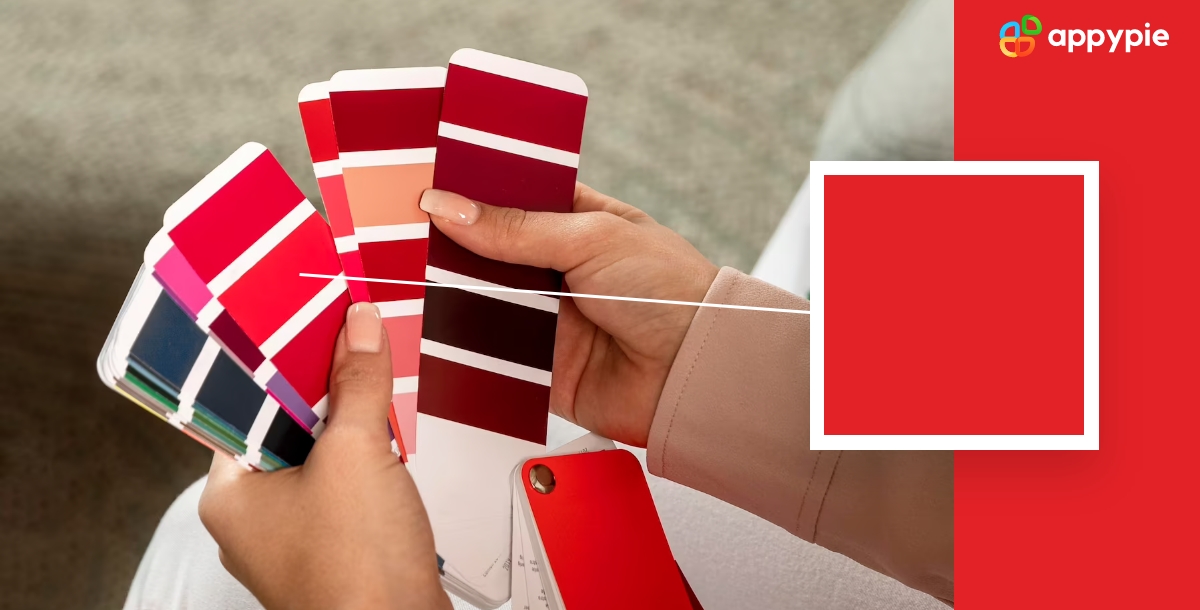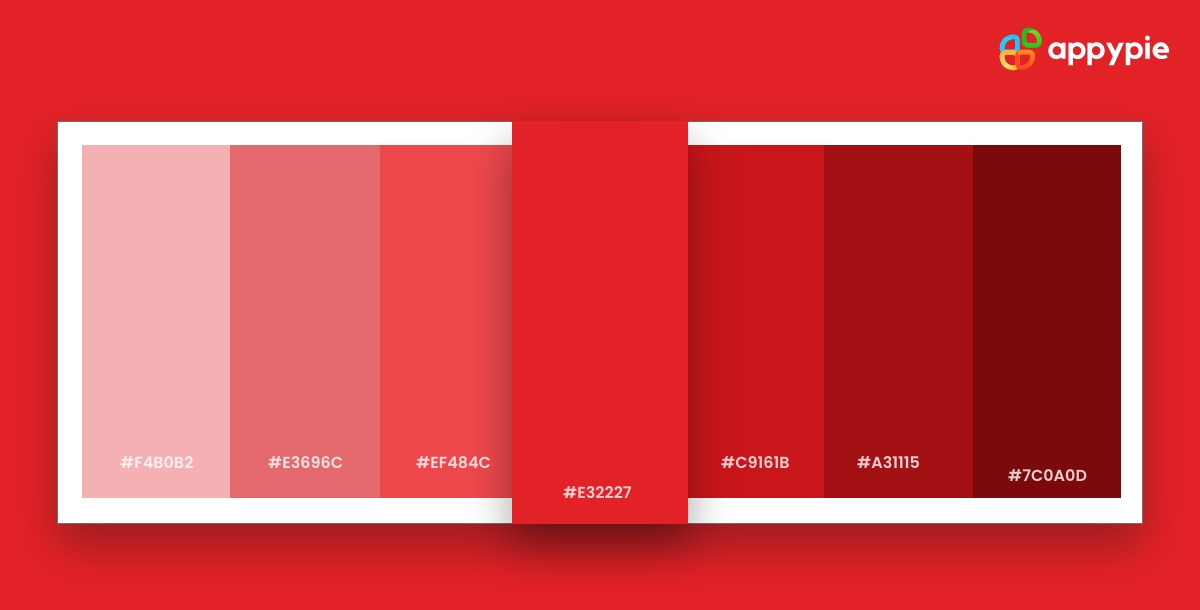Understanding Chili Pepper Color: What You Need to Know

Introduction
Welcome to the fiery and colorful world of chili peppers! Chili peppers come in a dazzling array of colors, from bright green to deep red, and each hue offers its own unique flavor profile and heat level. Have you ever wondered why some peppers change color as they ripen, or why a jalapeño pepper is green while a habanero pepper is orange? In this blog, we will explore everything you need to know about chili pepper color, from the chemistry behind pigments to the health benefits of different colors. Join us on this journey as we dive deep into the colorful and spicy world of chili peppers!
Table of Content
- Introduction
- What the Chili Pepper Color Signifies in Graphic Design
- A Complete Guide to Creating Color Palettes with Chili Pepper
- The Significance of Chili Pepper in the Design Industry
- Tracing the Evolution of Chili Pepper Color: From Ancient Times to Modern Times
- Creating Harmonious Designs with Complementary Colors for Chili Pepper
- A Comprehensive Guide to Chili Pepper Color Shades Using HEX Codes
- Enhance Your Design Skills and Craft Stunning Graphics with Appy Pie's AI Image Color Picker
- Conclusion
What the Chili Pepper Color Signifies in Graphic Design
Chili pepper, the vibrant and fiery hue, has long been associated with heat, passion, and intensity. And when it comes to graphic design, this color holds a special place in the design world for its bold and expressive nature. Whether you're designing a logo, poster, or packaging, chili pepper is a color that can't be ignored.
So what does chili pepper color signify in graphic design? For starters, it's a color that demands attention. It's impossible to ignore this spicy hue, and that's precisely what makes it such a popular choice for designers who want to create a lasting impression. Chili pepper is also associated with passion and energy, making it a great choice for brands that want to convey a sense of excitement and enthusiasm. From food and beverage companies to sports brands, chili pepper is a versatile color that can be used to convey a range of emotions and ideas.
But chili pepper isn't just about heat and passion. It's also a color that's associated with strength and courage. In fact, in some cultures, red is seen as a color of good luck and prosperity, and is often used in traditional celebrations and ceremonies. When used in the right way, chili pepper can be a powerful symbol of strength and confidence, making it an excellent choice for brands that want to convey a sense of power and authority.
Chili pepper is a color that's hard to ignore. It's bold, passionate, and full of energy, making it a favorite among designers who want to create a lasting impression. Whether you're designing a logo, with accents of cooling mint green, a website contrasted by soothing navy blue, or marketing materials punctuated with sparks of bright yellow, this fiery hue of chili pepper is sure to make your designs sizzle, much like the flames of a sunset.
A Complete Guide to Creating Color Palettes with Chili Pepper

Chili pepper is a bold and fiery color that can add energy, passion, and excitement to any design project. Whether you're designing a logo, website, or marketing materials, a well-crafted chili pepper color palette can make your designs sizzle. But how do you create a color palette with this spicy hue that really pops?
First, it's important to understand the different shades of chili pepper. From bright red-orange to deep maroon, chili pepper comes in a range of tones and shades that can be used to create different effects. Once you have a good understanding of the range of colors within the chili pepper family, you can start to experiment with different combinations.
One popular way to create a chili pepper color palette is to pair it with cool, complementary colors like teal, turquoise, or blue-gray. This creates a bold and striking contrast that really makes the chili pepper pop. Another approach is to pair chili pepper with warmer, earthy tones like brown or gold for a more subdued, natural feel.
When creating a chili pepper color palette, it's important to consider the overall mood and message you want to convey. Are you going for bold and daring, or understated and natural? By experimenting with different shades and combinations, you can find the perfect chili pepper color palette to bring your designs to life.
Thus, creating a color palette with chili pepper can be a fun and exciting process. By playing with different shades and combinations, you can create designs that are bold, passionate, and full of energy. So go ahead, let your creativity run wild, and see where the spicy world of chili pepper can take you!
The Significance of Chili Pepper in the Design Industry
Chili pepper, a color that represents heat, passion, and intensity, is a popular choice in the design industry for its ability to add energy and excitement to any design project. Whether it's a logo, website, or marketing materials, chili pepper is a color that can make a lasting impression on viewers. But what makes this color so significant in the design industry?
One of the main reasons why chili pepper is significant in the design industry is because of its ability to grab attention. It's a color that's impossible to ignore, and that's precisely what makes it a popular choice among designers who want to make a statement. Chili pepper is also associated with strength and courage, which can help brands convey a sense of authority and power.
Another reason why chili pepper is significant in the design industry is because of its versatility. From food and beverage brands to sports companies, chili pepper can be used to convey a range of emotions and ideas. It's a color that can be bold and daring, or subtle and natural, depending on how it's used.
Lastly, chili pepper is significant in the design industry because of its cultural significance. In many cultures, red is seen as a color of good luck and prosperity, and is often used in traditional celebrations and ceremonies. By incorporating chili pepper, or even shades close to it like coral or scarlet, into a design software, brands can tap into this cultural significance and create a strong, emotive connection with their audience, just as the calmness of sky blue or the warmth of amber can evoke specific feelings.
Tracing the Evolution of Chili Pepper Color: From Ancient Times to Modern Times
Chili pepper is a color that has been around for centuries and has undergone a fascinating evolution from ancient times to modern design. From its origins in ancient cultures to its use in contemporary design, chili pepper has been a color that has always captured the attention of people.
In ancient times, chili pepper was used in religious ceremonies and was seen as a symbol of power and strength. In many cultures, it was also believed to have healing properties and was used in medicine. Over time, chili pepper became associated with passion, love, and excitement, and was often used in art and literature to represent these emotions.
As time passed, chili pepper continued to be a popular color in design, and it was often used in fashion, home decor, and graphic design. In the 20th century, it became a popular color for advertising and was used to create bold and eye-catching designs.
Today, chili pepper, much like classic black or timeless white, remains a popular color in the design industry, and it continues to evolve and change with the times. From fashion, where it stands out like a vibrant turquoise, to interior design, where it adds depth just like a rich forest green, chili pepper is a color that can be found in a range of industries and applications. Whether it's used to create a bold statement, similar to the audacity of electric blue, or add a pop of color, akin to a splash of canary yellow, chili pepper remains a beloved color in the diverse palette of the design world
Creating Harmonious Designs with Complementary Colors for Chili Pepper

Creating a harmonious design with complementary colors for chili pepper involves finding the right balance between vibrancy and contrast. With the following tips, designers can create visually appealing and effective designs that utilize the bold and vibrant nature of chili pepper to its fullest potential.
Here are some tips on how to create a harmonious design with complementary colors for chili pepper:
- Pair it with cool tones
- Use a neutral color
- Combine with warm tones
- Consider the context
- Experiment with different shades
Complementary colors such as blue or green can provide a calming contrast to the boldness of chili pepper, making it stand out while maintaining a sense of balance.
A neutral color such as gray or beige can help to tone down the intensity of chili pepper while still allowing it to remain the focal point of the design.
Warm tones such as orange or yellow can provide a complementary contrast to chili pepper, creating a cohesive and harmonious design.
Depending on the context of the design, different complementary colors may be more effective. For example, using white or black with chili pepper can create a sophisticated and modern look, while using pink or purple can create a playful and feminine design.
Complementary colors do not necessarily have to be exact opposites on the color wheel. Experimenting with different shades and hues can lead to unique and creative design solutions.
A Comprehensive Guide to Chili Pepper Color Shades Using HEX Codes

Chili pepper is a vibrant color that is often used in graphic design to make designs stand out. To make the most of this color, it is important to understand its different shades and how to use them effectively. Using these different shades of chili pepper can help designers create unique and visually appealing designs. By understanding the HEX codes associated with each shade, designers can create a cohesive and harmonious design that makes the most of the bold and vibrant nature of chili pepper.
Here's a comprehensive guide to chili pepper color shades using HEX codes:
- Light Chili Pepper (#FF5733)
- Classic Chili Pepper (#FF0000)
- Dark Chili Pepper (#8B0000)
- Pinkish Chili Pepper (#FF7F50)
- Brownish Chili Pepper (#A52A2A)
This shade of chili pepper is lighter and softer than the classic bright red chili pepper. It is often used in designs that require a more subtle touch.
This is the classic, bright red chili pepper shade. It is bold, eye-catching, and perfect for designs that need to grab attention.
This shade of chili pepper is darker and more muted than the classic shade. It is often used in designs that require a more sophisticated and subdued look.
This shade of chili pepper has a pinkish tone to it. It is a softer, more feminine shade that can be used in a variety of designs.
This shade of chili pepper has a brownish tone to it. It is often used in designs that require a more earthy, natural look.
Enhance Your Design Skills and Craft Stunning Graphics with Appy Pie's AI Image Color Picker
Designing visually appealing graphics can be a daunting task, especially if you're not familiar with color theory. However, with Appy Pie's AI Image Color Picker, enhancing your design skills and creating gorgeous graphics has never been easier. Here's a step-by-step guide to using Appy Pie's AI Image Color Picker tool to create stunning graphics:
- Choose an Image
- Pick a Color
- Analyze Color Codes
- Preview Your Color Palette
- Save and Export Your Design
Either choose an image from your computer or enter an image URL, and the image will be uploaded to the screen.
You can now pick any color on this image using your mouse pointer.
Once you choose the color, you will have HEX, RGB, HSL, and CMYK codes for the color displayed on your screen.
As you scroll down, you will also get an entire palette curated for you directly from the image!
Save and export your design - Finally, save your color palette and use it in your design. Appy Pie's AI Image Color Picker tool allows you to export your color palette as a PNG or SVG file, making it easy to use in your design software of choice.
With Appy Pie's AI Image Color Picker tool, enhancing your design skills and creating stunning graphics has never been easier. By following these simple steps, you can create a visually appealing color palette that will take your designs to the next level.
Conclusion
Chili pepper color is a vibrant and attention-grabbing color that has been used in various forms of design throughout history. From ancient times to modern-day graphic design, the color has evolved and taken on new meanings and uses. This comprehensive guide has explored the various shades of chili pepper and provided a deep understanding of how to use them effectively in design. By understanding the history, meaning, and usage of this color, designers can create stunning graphics and elevate their design skills to new heights. With Appy Pie's Color Wheel Tool, designers can further enhance their creations and produce visually striking designs.
Related Articles
- Google Display Ad Sizes: Everything You Need to Know
- Microsoft Teams: Platform Characteristics, Integrations, & Scope with Appy Pie’s Connect!
- Top 10 Training Tips to Master Call Center Excellence
- 6 Benefits of Using an Enterprise No-Code Platform for Building Apps & More
- Customer Support: The Foundation of a Successful Business
- Customer Advocacy: Definition, Importance & Top 5 Effective Strategies
- Everything You Need to Know About Facebook Pixels
- Logo Design Cost: Budgeting Brand Identity In 2024
- Mastering PowerPoint Online: Ultimate Guide to Create & Present Dynamic Slideshow
- Augmented Reality & Its Real-World Applications




